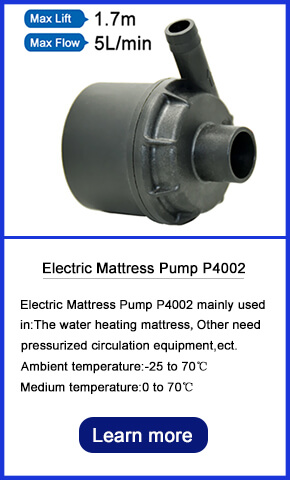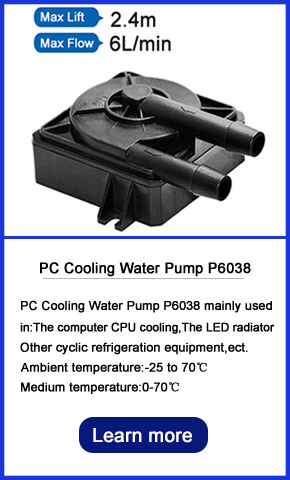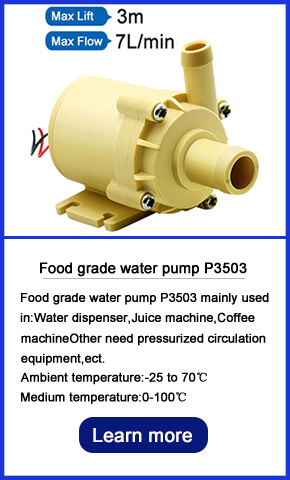Small Water Pump: A Technical Overview
Published:2025-03-19
A small water pump, also known as a micro water pump or miniature pump, is a compact device essential for transferring or pressurizing liquids. These pumps are crucial in diverse industries, including automotive, energy storage, industrial cooling, and household appliances. This article provides a technical overview of small water pumps, focusing on their components, types, working principles, benefits, and key applications in these industries.
 |  |  |
The components of a small water pump typically include:
- Pump Body: The main structure housing internal parts.
- Inlet and Outlet: Points for liquid entry and exit.
- Stator and Rotor: Convert electrical energy to mechanical energy.
- Impeller or Blades: Rotate to move liquid within the pump body.
- Filter Nets: Prevents debris entry for smooth operation.
Categorized based on working principles and power sources, small water pumps include:
- Centrifugal Pumps: Use a rotating impeller for liquid transfer, available as AC or DC pumps. DC pumps are more compact and energy-efficient.
- Positive Displacement Pumps: Move a fixed liquid volume per cycle, suitable for high-pressure
Working principle of small water pump
Converting electrical energy to mechanical energy, small water pumps operate differently based on their type. In centrifugal pumps, power application spins the rotor, causing the impeller to rotate and create centrifugal force, pushing liquid outward and drawing more liquid into the inlet.
Advantages of small water pumps:
- Compact Size: Ideal for tight spaces and portable applications.
- Energy Efficiency: Low power consumption, especially in DC pumps.
- Durability: Built to withstand wear and tear for long-term reliability.
- Versatility: Capable of handling various liquids.
Key industry applications of small water pumps:
- Automotive Industry: Essential in cooling systems, ensuring engine temperature optimization. Used in fuel injection systems for precise fluid control.
- Energy Storage Industry: Pumps play a crucial role in thermal management systems of battery packs. Ensure consistent coolant circulation, maintaining optimal battery temperatures.
- Industrial Cold Water Machine Industry: Key component in cooling systems, providing chilled water for various industrial processes. Ensures efficient heat removal, maintaining equipment performance.
- Household Appliances Industry: Used in coffee machines, water dispensers, and shower systems for consistent water flow. Enhances the functionality and efficiency of various household devices.
Conclusion
Small water pumps are versatile, reliable devices crucial in diverse industries such as automotive, energy storage, industrial cooling, and household appliances. Their compact size, energy efficiency, durability, and versatility make them an excellent choice for liquid transfer and pressurization tasks. By understanding their components, types, working principles, and benefits, you can select the right pump for your specific application.
- Distribution in Water Heater Mattresses: Why BLDC Pumps Ensure Uniform Heating
- How BLDC Pumps Ensure Precise Flow in Water Dispensers
- Why BLDC Pumps Are Essential for Smart Toilets
- The Critical Role of Automotive Electronic Water Pumps in New Energy Vehicle Battery Thermal Management
- Noise Control Technology for Smart Toilet Water Pumps: Enhancing Quiet Operation in Modern Bathrooms
- Unveiling the Working Principle of Automotive Electronic Water Valves
- Comparative Analysis of Liquid-Cooled Pumps vs. Air-Cooled Systems for EV Charging Stations
- Technical Application of Brushless DC Motors in Energy Storage Circulation Pumps
- Water Heater Pump: Efficiency Upgrade for Low-Voltage Systems
- How Dishwasher Water Pumps Enhance Cleaning Coverage Through Stable Operation?
